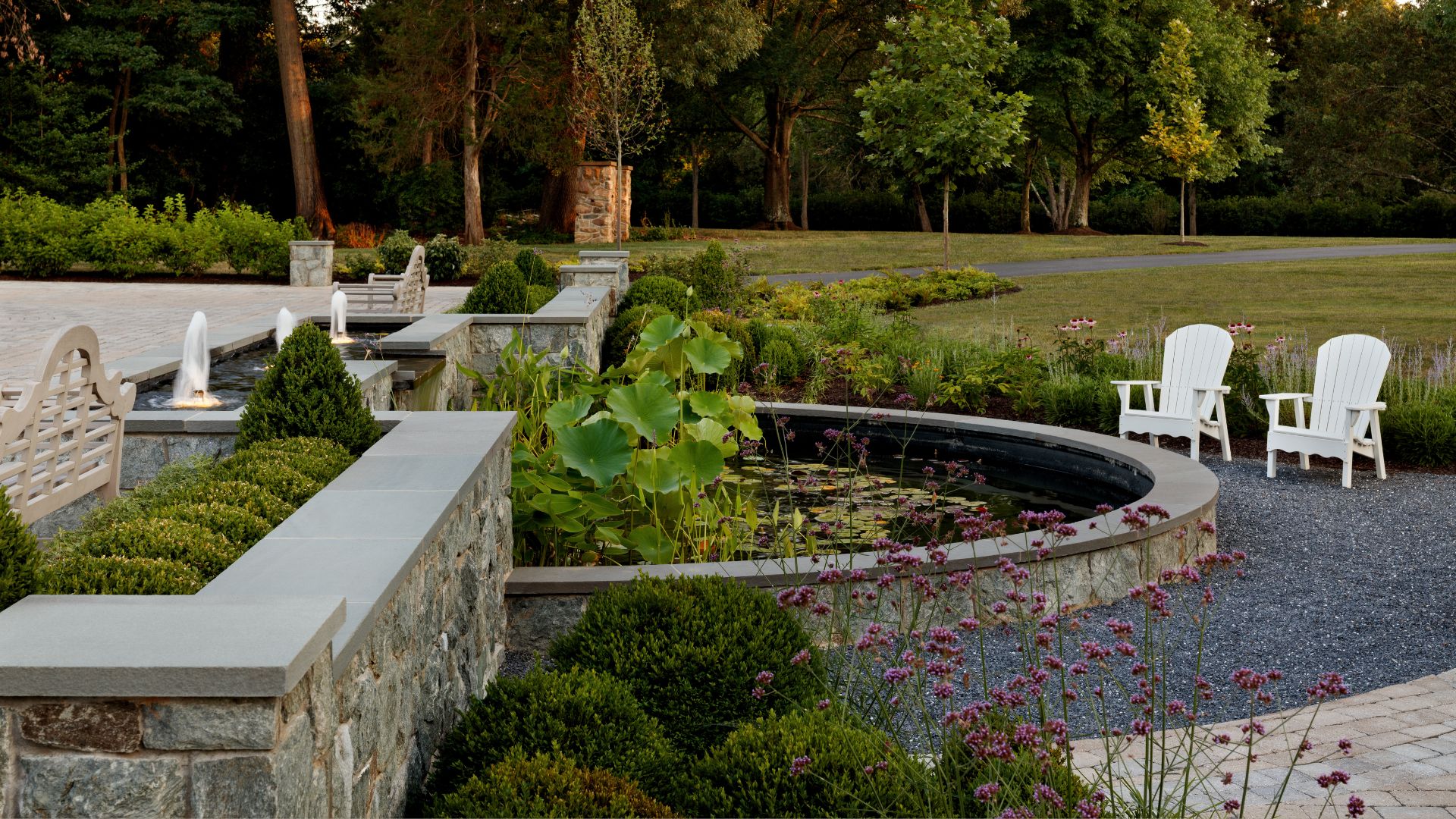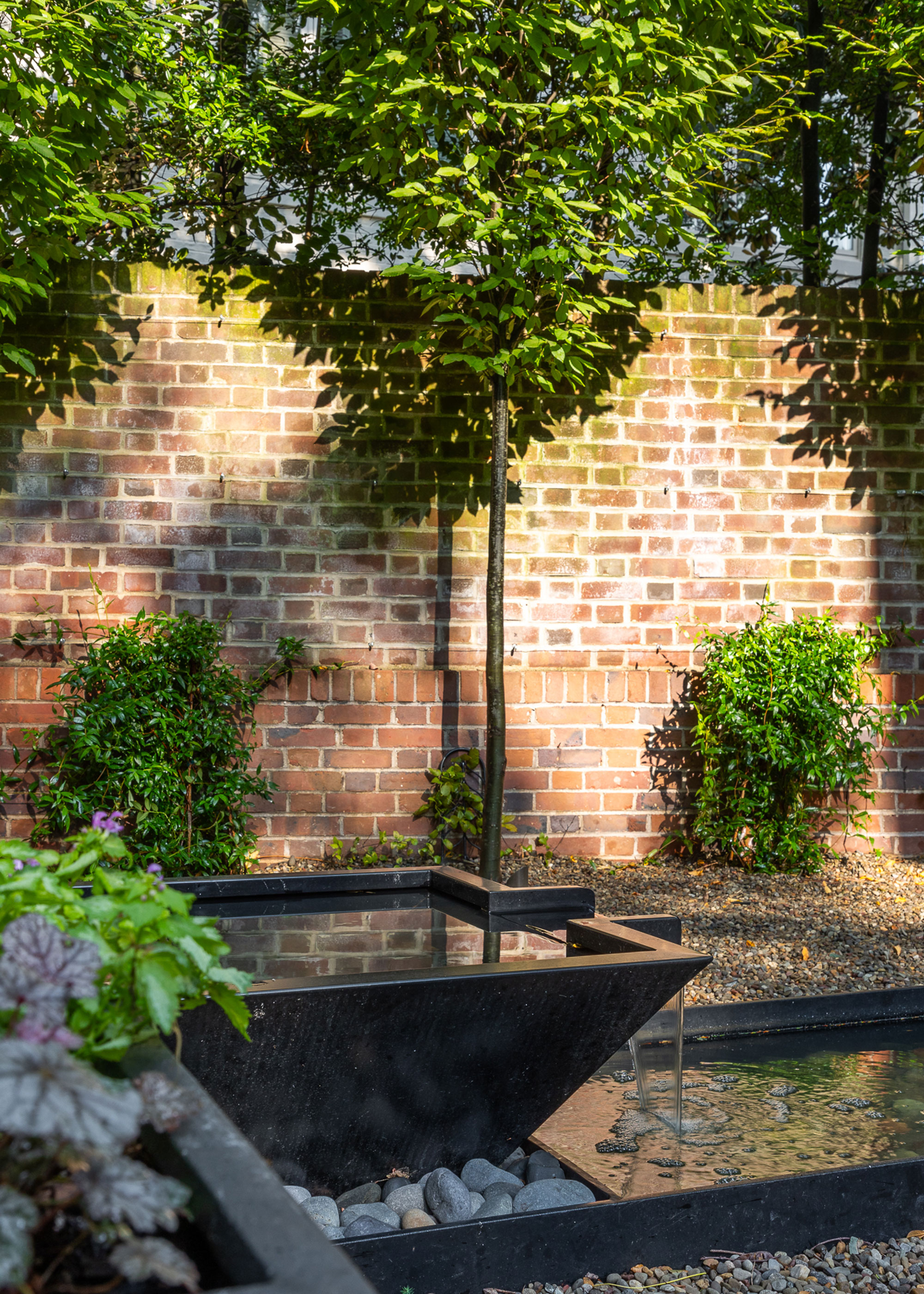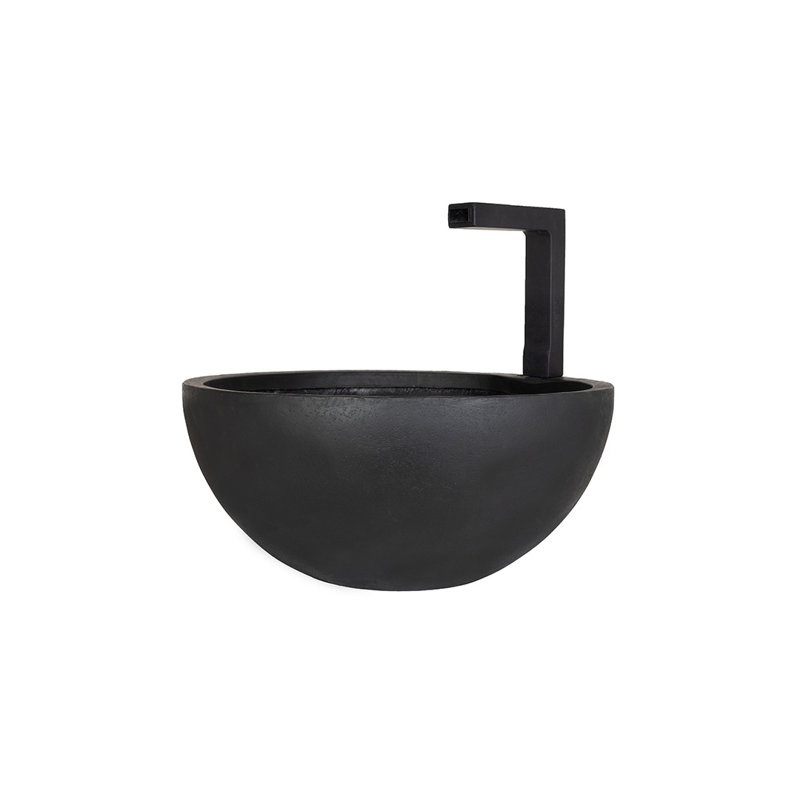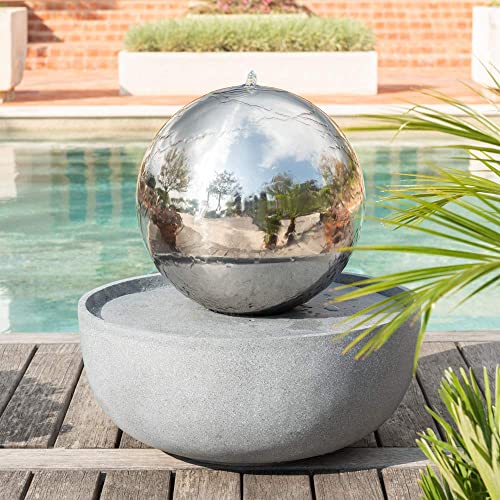This Common Landscaping Feature Can Actually Help Your Garden Feel Cooler in Hot Weather — Here’s How
A little bit of science you need to know as to how a water feature can ease high temperatures in your outdoor space


As the warm weather roll in, there’s nothing quite like spending time in the garden, but when temperatures soar, even the most thoughtfully designed outdoor space can start to feel uncomfortably hot. As homeowners increasingly look for ways to make their gardens more comfortable in extreme weather, water features are now being used not just for their beauty, but also for its ability to cool the surrounding area.
Whether it’s a beautiful fountain, a reflective pond, or a minimalist rill, water has always had a powerful presence in garden design. But beyond aesthetics, water features can serve a practical function, too. Water gardens have a passive cooling element, capable of making the space feel fresher and more inviting during the hottest part of the day.
The science behind this is surprisingly simple, yet often overlooked in everyday garden design. By incorporating water into your outdoor space in a strategic way, you can enjoy a cooler, more comfortable garden that doesn't rely on artificial shade or large fans. Here’s how it works—and how to make the most of it.
How Can a Water Feature Make a Garden Feel Cooler?

When it comes to a water feature's cooling properties, it's all about evaporation.
When it comes to landscaping, the core of water’s cooling power is the process of evaporative cooling. "As water evaporates into the air — whether from a pond’s surface or the gentle spray of a fountain — it absorbs heat from its surroundings," says Joseph Richardson, founder at Richardson & Associates Landscape Architecture. This natural process can lower the ambient temperature in the immediate vicinity of the feature, making the air feel more pleasant and refreshing.
This effect is especially noticeable when the water is moving. Features like fountains, cascading waterfalls, and bubblers help keep water circulating, increasing the rate of evaporation and maximizing the cooling impact. Plus, the sound of flowing water has its psychological benefits, helping to create a sense of calm and making hot weather feel less oppressive.
Water features also contribute to microclimate control. In modern gardens surrounded by hardscaping — think patios, gravel paths, and stone walls — heat can build up quickly and radiate throughout the day. According to Joseph, a strategically placed water feature introduces a cooler zone, creating gentle air currents as the cooler air near the water displaces warm air. This doesn’t just make the garden more pleasant; it can even benefit nearby plants and lawns that might otherwise suffer from the intense heat.
Where to Place a Water Feature for the Best Effect

Shady spots are actually better for the full cooling effect.
To make the most of a water feature’s cooling benefits, placement is key. "One of the most effective strategies is to position the feature near your main seating or socializing areas," recommends London-based garden designer Georgia Lindsay. "Whether that’s a dining patio, a shaded pergola, or garden terrace, having a water element nearby will bring the cooling effect right where it’s needed most. A small tabletop fountain or a narrow garden rill running alongside a bench can make a significant difference on a warm day."
The Livingetc newsletters are your inside source for what’s shaping interiors now - and what’s next. Discover trend forecasts, smart style ideas, and curated shopping inspiration that brings design to life. Subscribe today and stay ahead of the curve.
Shade is another important factor. While placing a water feature in full sun may seem tempting for visual drama, it can actually reduce the effectiveness of evaporative cooling. "In direct sunlight, the water will evaporate too quickly and may require constant topping up," continues Georgia. "Placing your feature in partial or dappled shade — perhaps beneath a tree canopy or a pergola — helps moderate evaporation and keeps the surrounding temperature more stable."
Another thing to consider is wind direction. If you can place your feature so that prevailing breezes pass over it before reaching your garden table and chairs, you'll amplify the cooling sensation as the air picks up moisture and coolness from the water. Additionally, proximity to hard surfaces such as stone or concrete can help, as these materials retain heat and enhance the contrast in temperature, making the area around the water feel even fresher.
If space allows, you might explore the garden trend of layering your water feature with other cooling elements—like tall grasses, lush greenery, or climbing vines—that can further soften the temperature and create a natural cooling zone. Think of it as designing a calm oasis, with the water feature as the central anchor.
Water features have long been valued for their aesthetic and sensory appeal, but they offer much more than that. In the face of rising summer temperatures, incorporating water into your garden is a smart, sustainable way to create a more liveable outdoor environment. With just a little planning, you can turn a decorative element into a powerful natural air conditioner.
Whether you’re working with a narrow garden or a sprawling lawn, the key is to choose the right style and position it strategically. Focus on where you spend the most time and how the water feature interacts with its surroundings.

Seraphina is a contributing editor at Livingetc, writing Advice features on design, renovation and organisation. Seraphina is a qualified Interior Designer from KLC School of Design having worked at London-based interior design agencies Anouska Hempel and ND Studios. Seraphina has also completed her MA degree in Magazine Journalism at City, University of London, with previous experience including writing for Homes & Gardens, Women's Health, Food & Travel and Fabulous Magazine.


